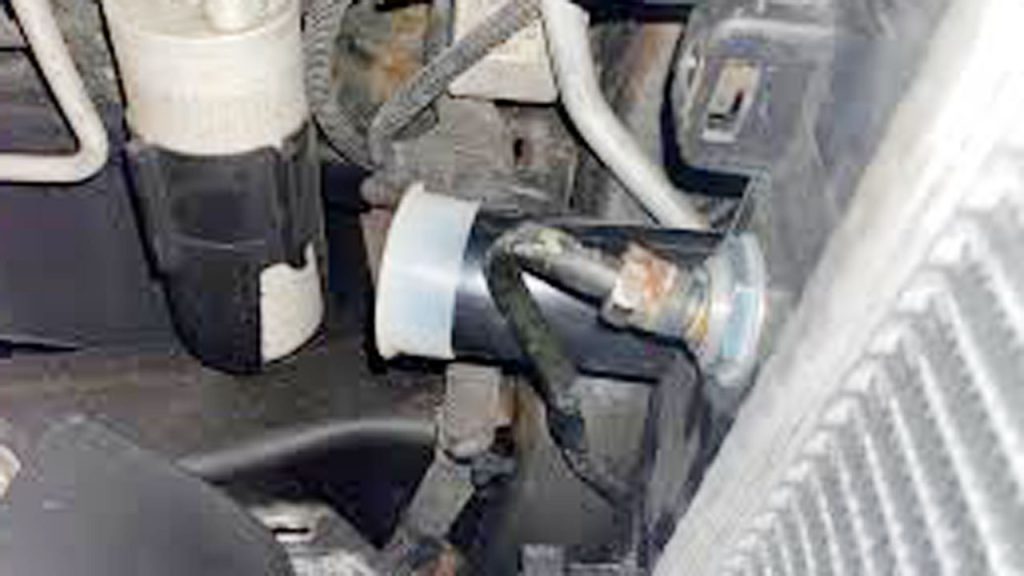Have you ever wondered what could go wrong if the transmission cooling lines in a vehicle got mixed up? If you’ve been tinkering with your car or even considering some DIY maintenance, this is a question you might encounter. Mixing up transmission cooling lines isn’t something you’d want to happen, as it can have significant consequences for your car’s performance and lifespan.

Image by reddit
In this article, I will walk you through what transmission cooling lines are, their function, and what could happen if they’re installed incorrectly. By the end, you’ll have a clear understanding of why this component is crucial and how to ensure your vehicle stays in top shape.
What Are Transmission Cooling Lines?
Transmission cooling lines are an essential part of your car’s cooling system. These lines transport transmission fluid from the transmission to the radiator, where it’s cooled before being sent back to the transmission.
Transmission fluid plays a critical role in keeping your car running smoothly. It:
- Lubricates the transmission’s moving parts.
- Reduces friction and heat build-up.
- Ensures smooth gear shifts.
The cooling lines help maintain the fluid’s optimal temperature, which is crucial for preventing overheating and extending the life of your transmission.
Transmission Cooling Lines in a Vehicle
Let’s think of your transmission cooling lines as your car’s circulatory system. Just as your veins and arteries move blood to and from your heart, these lines ensure that the transmission fluid circulates correctly.
When everything is hooked up the way it should be, the system works like this:
- Fluid Travels to the Radiator: Hot transmission fluid flows through the lines to the radiator or an auxiliary cooler.
- Cooling Process: The radiator cools the fluid using airflow and other cooling mechanisms.
- Return to Transmission: The cooled fluid is then returned to the transmission to continue its job.
When the lines are mixed up, this orderly process is disrupted, and things can go south quickly.
What Happens if You Mix Up the Transmission Cooling Lines?
Mixing up the transmission cooling lines may not seem like a big deal at first, but it can lead to serious problems. Here’s what could happen:
Improper Fluid Circulation
If the lines are reversed, the transmission fluid might not flow through the cooler properly. Instead of being cooled, the fluid could bypass the cooling system entirely, remaining hot and leading to:
- Overheating of the transmission.
- Increased wear and tear on transmission components.
- Potential failure of seals and gaskets due to excess heat.
Transmission Overheating
Without proper cooling, the transmission will overheat. Overheating can cause:
- Permanent damage to internal components.
- Burnt transmission fluid, which loses its lubricating properties.
- A shorter lifespan for your transmission.
Reduced Transmission Efficiency
When the fluid isn’t circulating correctly, your transmission might not perform as intended. This can lead to:
- Delayed or erratic gear shifting.
- Reduced fuel efficiency.
- A rough driving experience.
Potential Damage to Other Systems
Sometimes, mixing up the lines can cause fluid to flow into unintended parts of the cooling system, leading to contamination or damage to the radiator. Repairing these issues can be costly and time-consuming.
Identifying the Correct Transmission Cooling Line Connections
If you’re working on your vehicle, it’s crucial to identify the correct connections for your transmission cooling lines. Typically, there are two lines:
- Inlet Line: This line carries hot fluid from the transmission to the cooler.
- Outlet Line: This line returns cooled fluid to the transmission.
Most vehicles have clear markings or diagrams to help you identify these lines. If you’re unsure, consult your vehicle’s manual or seek professional advice.
Steps to Fix Mixed-Up Transmission Cooling Lines
If you suspect that your transmission cooling lines have been installed incorrectly, don’t panic. Here’s what you can do:
- Turn Off the Engine: To prevent further damage, turn off your car and let it cool down.
- Inspect the Lines: Check the connections and look for any visible signs of misplacement.
- Consult the Manual: Your car’s manual will provide guidance on proper line placement.
- Reconnect the Lines: Disconnect and reattach the lines correctly. Ensure they’re securely fastened to prevent leaks.
- Check for Leaks: After reattaching the lines, inspect for any fluid leaks.
- Test the System: Start the car and monitor the transmission’s performance. Look for smooth gear shifts and normal operating temperatures.
Pro Tips for Handling Transmission Cooling Lines
- Label the Lines: When disconnecting the cooling lines, use labels or colored tape to mark the inlet and outlet lines. This can prevent mix-ups during reinstallation.
- Use High-Quality Parts: If you’re replacing the lines, invest in high-quality components that are designed for your specific vehicle.
- Regular Maintenance: Keep an eye on your transmission fluid levels and condition. Regular checks can help you catch issues before they become major problems.
Symptoms of Mixed-Up Transmission Cooling Lines
| Symptom | Possible Cause | Solution |
|---|---|---|
| Overheating transmission | Improper fluid circulation | Reconnect lines correctly |
| Burnt transmission fluid | Excessive heat | Replace fluid; fix connections |
| Erratic shifting | Reduced lubrication or overheating | Reattach lines and test transmission |
| Leaking fluid | Poor connections or seal damage | Inspect and tighten connections |
When to Seek Professional Help
If you’ve tried to fix the issue but are still experiencing problems, it’s best to seek help from a professional mechanic. Transmission systems are complex, and incorrect repairs can lead to costly damage. A mechanic can diagnose the problem accurately and ensure everything is working as it should.
Importance of Proper Installation
Correctly installing transmission cooling lines is more than just a technical detail—it’s essential for your vehicle’s health. Properly functioning lines ensure that your transmission stays cool, performs efficiently, and lasts longer.
Conclusion
Mixing up transmission cooling lines might seem like a small mistake, but it can lead to significant consequences for your vehicle. From overheating to reduced efficiency, the risks are too great to ignore. The good news is that with a little knowledge and attention to detail, you can avoid this problem entirely.
Remember, if you’re unsure about the placement of your transmission cooling lines, it’s always better to double-check or seek professional advice. By taking care of this essential component, you’ll ensure your car runs smoothly and reliably for years to come.
FAQs
What are transmission cooling lines used for?
Transmission cooling lines transport fluid from the transmission to the cooler, ensuring it stays at an optimal temperature.
Can mixing up cooling lines damage the transmission?
Yes, mixing up the lines can prevent proper cooling, leading to overheating and potential damage to the transmission.
How do I know if my transmission cooling lines are mixed up?
Signs include overheating, erratic shifting, and burnt transmission fluid.
Can I fix mixed-up cooling lines myself?
Yes, if you’re confident in your skills, you can fix the lines by following your car’s manual. However, seeking professional help is always an option.
Do all vehicles have transmission cooling lines?
Most automatic vehicles have transmission cooling lines, but some manual transmissions may not require them.


